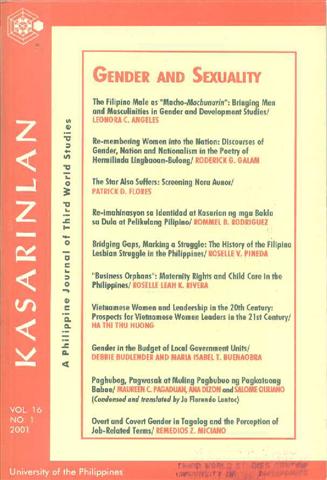The Star Also Suffers: Screening Nora Aunor
Abstract
Pain is an emotion most easily transmitted and shared in a media-centered society. For more than a quarter of a century, film actress and once and future "Superstar," Nora Aunor, has made a career as one who experiences physical and emotional pain, whether as the doormat love-slave of a "never was" actor in Bona, the disillusioned nurse in 'Merika, the tireless housemaid in Atsay and the doomed domestic helper in The Flor Contemplacion Story. In each of these films, she performs sacrifices worthy of several heroines and (usually) survives extreme levels of class and foreign oppression and dehumanization and emerges more human and no less indomitable. Her performances are very much acclaimed and awarded. The life of Nora Aunor before stardom provides her added credibility. Her transformation from impoverished child, to amateur singing sensation, to movie icon is a story bookprelude to her real/reel life drama. Sufferance is her cinema and fans and non-fans alike have suffered with her. In a reprise of her role as Elsa in Himala, Nora addressed a stunned audience at the EDSA Shrine with the truth. When she unburdened herself and burdened the multitude of her suffering at the hands of former President Joseph Estrada, the effect was dramatic, if not convincing and contagious. When seen in the context of Nora's history, the utterance of pain, the politics of making it known and acknowledging it in public, assumes authenticity; the star's folklore and filmography could affirm this assertion.
Published
2008-09-18
Section
Features
Keywords
Nora Aunor; Cinema; Represenation
By submitting a manuscript, the authors agree that the exclusive rights to reproduce and distribute the article have been given to the Third World Studies Center.



